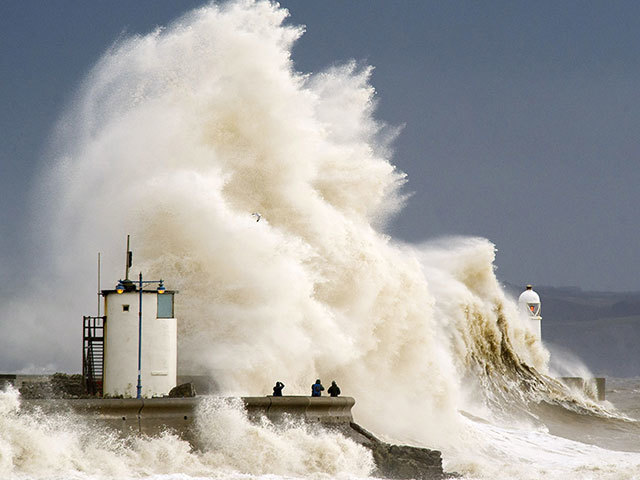
Constructing six tidal lagoons around the coasts to harness power from the tides would contribute £27 billion to the UK economy over 12 years, a report has suggested.
Once built, the fleet of lagoons would supply 8% of the UK’s electricity and would contribute £3.1 billion a year over their 120-year life-time, the study by the Centre for Economics and Business Research (Cebr) said.
The programme would also create thousands of jobs, cut carbon emissions and, by putting the UK at the forefront of developing the technology, could help secure up to £70 billion in exports.
Lagoons could also have other benefits such as providing flood protection to at-risk coastal communities, the study suggested.
The report examined proposals by renewables company Tidal Lagoon Power to build a series of tidal lagoons around the western coast of the UK, the first of which is planned for Swansea Bay.
If it receives planning permission, the £1billion Swansea Bay tidal lagoon power plant, which will generate renewable energy by capturing and releasing tidal water through turbines, will begin construction in spring 2015.
The company aims to scale up the lagoon design to build five larger tidal power plants in the Severn Estuary, North Wales and the north west coast of England in a process which would see all six completed by 2027.
The report for Tidal Lagoon Power by Cebr found that constructing the six lagoons over a 12-year period could create or sustain up to 35,800 jobs a year on average during that time – and up to 70,900 jobs at its peak.
The operation of the lagoons and the electricity they produce will contribute £3.1 billion a year and support up to 6,400 jobs, it predicts.
The Swansea Bay project will source 71% of its products and services from within the UK and aims to source almost half from Wales, and the construction of all six projects could boost local economies.
Net exports from tidal lagoons, through cutting imports of fossil fuels, exporting tidal electricity at times of over-supply and exporting components and expertise to roll out lagoon power plants overseas, could reach £3.7billion a year, totalling £70billion between 2030 and 2050.
Harnessing the tides for power would provide predictable renewable electricity, which could end up cheaper than other low-carbon sources of energy such as nuclear and offshore wind.
And putting lagoons built to withstand storms and sea level rises in areas at risk of flooding such as Colwyn Bay, where one of the six plants is planned, would help protect vulnerable communities from floods, the report said.
Douglas McWilliams, executive chairman and chief economist at the Centre for Economics and Business Research, said: “The UK is losing its hard-fought energy independence and struggling to identify genuine drivers of growth.
“We’ve been here before. The response in the 1970s was to support a domestic offshore oil and gas industry which became a world leader and has delivered huge benefits to the UK economy.
“This report shows why today’s response to the same challenges to energy sovereignty and economic growth would do well to exploit the new opportunity presented by tidal lagoons.”
Mark Shorrock, chief executive of Tidal Lagoon Power, said: “The UK will soon decide whether or not to embrace tidal lagoon infrastructure.
“Having analysed all of the costs and all of the savings associated with this decision, this study clearly demonstrates that the benefits to the national economy would be enormous, immediate and long-lived.”
John Cridland, director general at business group CBI, said: “We urgently need to upgrade our energy infrastructure, we need to capture greater value from green investments, and we need to re-balance our economy away from the South East.
“This report paints a compelling picture for the potential contribution of tidal lagoon infrastructure in each of these areas. We have the resource and we have the industry.”
Recommended for you
